-
 Bitcoin
Bitcoin $115700
-2.49% -
 Ethereum
Ethereum $3702
1.66% -
 XRP
XRP $3.127
0.75% -
 Tether USDt
Tether USDt $1.001
-0.01% -
 BNB
BNB $770.3
0.51% -
 Solana
Solana $180.3
-2.87% -
 USDC
USDC $1.000
0.04% -
 Dogecoin
Dogecoin $0.2304
-2.27% -
 TRON
TRON $0.3158
2.41% -
 Cardano
Cardano $0.8031
0.49% -
 Hyperliquid
Hyperliquid $42.75
0.65% -
 Stellar
Stellar $0.4215
0.35% -
 Sui
Sui $3.713
0.51% -
 Chainlink
Chainlink $17.98
0.43% -
 Bitcoin Cash
Bitcoin Cash $542.3
6.95% -
 Hedera
Hedera $0.2415
0.22% -
 Avalanche
Avalanche $23.52
-0.39% -
 Litecoin
Litecoin $114.4
0.93% -
 UNUS SED LEO
UNUS SED LEO $8.962
-0.42% -
 Shiba Inu
Shiba Inu $0.00001355
-0.01% -
 Toncoin
Toncoin $3.133
0.20% -
 Ethena USDe
Ethena USDe $1.001
-0.04% -
 Uniswap
Uniswap $10.43
3.81% -
 Polkadot
Polkadot $4.007
0.44% -
 Monero
Monero $327.4
2.66% -
 Dai
Dai $1.000
0.01% -
 Bitget Token
Bitget Token $4.511
-1.08% -
 Pepe
Pepe $0.00001224
-2.30% -
 Aave
Aave $292.0
1.64% -
 Cronos
Cronos $0.1299
2.92%
How to use SAR in short-term option trading? Do option SAR parameters need to be adjusted?
The Parabolic SAR helps short-term option traders optimize entry and exit points by signaling trend shifts, but it may generate false signals in choppy markets.
Jun 07, 2025 at 01:28 pm
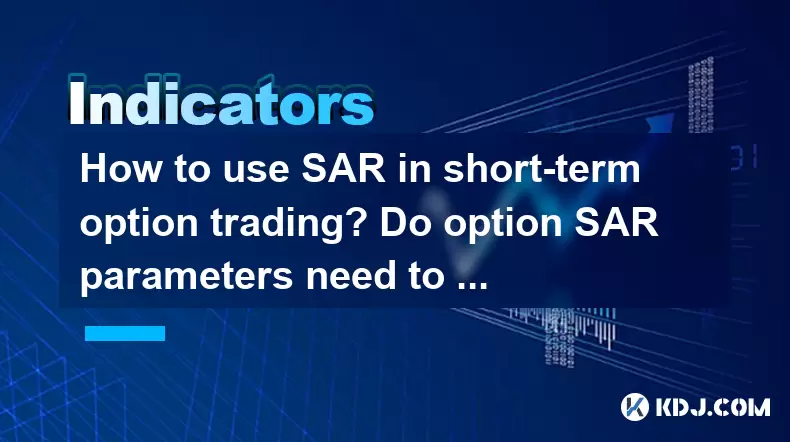
The use of the Parabolic SAR (Stop and Reverse) indicator in short-term option trading can be a powerful strategy for traders looking to optimize their entry and exit points. The Parabolic SAR is a technical analysis tool designed to determine the direction of an asset's momentum and potential reversal points. In the context of short-term option trading, this indicator can help traders make informed decisions about when to buy or sell options based on the underlying asset's price movements.
Understanding the Parabolic SAR
The Parabolic SAR is represented on a chart as a series of dots placed either above or below the price line. When the dots are below the price, it suggests an uptrend, indicating a potential buying opportunity. Conversely, when the dots are above the price, it indicates a downtrend, suggesting a selling or shorting opportunity. The SAR adjusts over time, accelerating as the trend continues and decelerating when the trend weakens.
Applying SAR to Short-Term Option Trading
In short-term option trading, the Parabolic SAR can be used to identify quick entry and exit points. For instance, if a trader is considering buying a call option, they might look for the SAR dots to shift from above the price to below it, signaling the start of an uptrend. Similarly, for a put option, the trader would wait for the SAR dots to move from below the price to above it, indicating a potential downtrend.
- Identify the Trend: Use the SAR to determine the current trend of the underlying asset.
- Enter the Trade: Buy a call option when the SAR indicates an uptrend, and buy a put option when it indicates a downtrend.
- Exit the Trade: Close the position when the SAR signals a trend reversal.
Adjusting SAR Parameters for Short-Term Trading
The standard parameters for the Parabolic SAR are an acceleration factor of 0.02 and a maximum value of 0.20. However, these parameters can be adjusted to better suit short-term trading strategies. For short-term options, traders often prefer a more sensitive indicator that can quickly react to price changes.
- Increase Sensitivity: Lowering the acceleration factor can make the SAR more sensitive to price movements, which is beneficial for short-term trading.
- Adjust Maximum Value: Increasing the maximum value can help the SAR catch up with rapid price changes more effectively.
Practical Example of Using SAR in Short-Term Option Trading
Consider a scenario where a trader is monitoring a stock with an upcoming earnings report. The trader believes that the stock's price will experience significant volatility and wants to capitalize on short-term movements using options.
- Monitor the SAR: The trader observes the stock's price and the SAR on a 15-minute chart.
- Identify Entry Point: The SAR dots shift from above the price to below it, indicating the start of an uptrend.
- Buy Call Option: The trader buys a call option with a short expiration date, anticipating a rise in the stock's price.
- Monitor and Exit: The trader continues to watch the SAR. When the dots shift back above the price, signaling a potential downtrend, the trader exits the position by selling the call option.
Potential Risks and Considerations
While the Parabolic SAR can be an effective tool for short-term option trading, it is not without risks. The indicator can generate false signals, especially in choppy or sideways markets. Additionally, the sensitivity of the SAR can lead to frequent trades, increasing transaction costs and potential losses.
- False Signals: Be cautious of signals that may not lead to sustained trends.
- Transaction Costs: Frequent trading can accumulate significant costs, impacting overall profitability.
- Market Volatility: High volatility can lead to rapid price changes, making it challenging to execute trades at favorable prices.
Combining SAR with Other Indicators
To enhance the effectiveness of the Parabolic SAR in short-term option trading, traders often combine it with other technical indicators. For example, using the Relative Strength Index (RSI) or Moving Averages can provide additional confirmation of trend strength and potential reversals.
- RSI: Use the RSI to gauge overbought or oversold conditions, which can complement the SAR's trend signals.
- Moving Averages: Incorporate moving averages to identify longer-term trends and filter out short-term noise.
Detailed Steps for Using SAR in Short-Term Option Trading
Here is a step-by-step guide on how to use the Parabolic SAR for short-term option trading:
- Select an Asset: Choose a stock or cryptocurrency with high liquidity and upcoming events that could cause volatility.
- Set Up the Chart: Open a trading platform and set up a 15-minute or 30-minute chart for the chosen asset.
- Apply the SAR: Add the Parabolic SAR indicator to the chart with standard or adjusted parameters.
- Monitor for Signals: Watch for the SAR dots to shift from above to below the price (for an uptrend) or from below to above the price (for a downtrend).
- Analyze Additional Indicators: Use the RSI or moving averages to confirm the SAR's signals.
- Enter the Trade: Buy a call option when the SAR indicates an uptrend, or buy a put option when it indicates a downtrend.
- Set Stop-Loss and Take-Profit Levels: Establish levels based on the SAR's position and potential price targets.
- Monitor and Exit: Continuously monitor the SAR and other indicators. Exit the trade when the SAR signals a trend reversal or when your stop-loss or take-profit levels are reached.
Frequently Asked Questions
Q1: Can the Parabolic SAR be used for long-term option trading?
Yes, the Parabolic SAR can be used for long-term option trading, but the parameters and time frame for analysis would need to be adjusted. For long-term trading, traders might use a daily or weekly chart and adjust the SAR's sensitivity to better capture longer-term trends.
Q2: How does the Parabolic SAR perform in different market conditions?
The Parabolic SAR performs best in trending markets, where it can effectively identify and follow the trend. In choppy or sideways markets, the SAR may generate false signals, leading to potential losses. Traders should be aware of the current market conditions and use additional indicators to confirm SAR signals.
Q3: Are there any other indicators that work well with the Parabolic SAR for short-term trading?
Yes, other indicators that work well with the Parabolic SAR for short-term trading include the Relative Strength Index (RSI), Moving Averages, and the Average Directional Index (ADX). These indicators can help confirm the SAR's signals and provide additional insights into market conditions.
Q4: How can traders manage the risk of frequent trading when using the Parabolic SAR?
Traders can manage the risk of frequent trading by setting strict stop-loss and take-profit levels, monitoring transaction costs, and using additional indicators to filter out false signals. It's also important to maintain a disciplined trading approach and avoid overtrading based solely on SAR signals.
Disclaimer:info@kdj.com
The information provided is not trading advice. kdj.com does not assume any responsibility for any investments made based on the information provided in this article. Cryptocurrencies are highly volatile and it is highly recommended that you invest with caution after thorough research!
If you believe that the content used on this website infringes your copyright, please contact us immediately (info@kdj.com) and we will delete it promptly.
- Litecoin Price Breakout Imminent? Rally Potential Explored!
- 2025-07-25 17:30:12
- Ether ETFs Surge, Bitcoin Wobbles: Is an ETH Breakout Imminent?
- 2025-07-25 16:50:12
- Bitcoin, Swift, and Presales: Navigating the Crypto Landscape in 2025
- 2025-07-25 17:30:12
- Navigating Virtual IDs, UID Tokens, and Aadhaar Numbers: A Privacy-First Approach
- 2025-07-25 17:36:12
- Top Trending Coins: Pump.fun, Ethena (ENA) & More - A CoinGecko & FxWirePro Analysis
- 2025-07-25 17:40:12
- Bitcoin, Symmetrical Triangles, and the Great Unknown: What's Next?
- 2025-07-25 16:30:12
Related knowledge

What does it mean that the KDJ indicator forms a double bottom at a low level?
Jul 25,2025 at 05:08pm
Understanding the KDJ Indicator in Cryptocurrency TradingThe KDJ indicator is a momentum oscillator widely used in cryptocurrency trading to identify ...
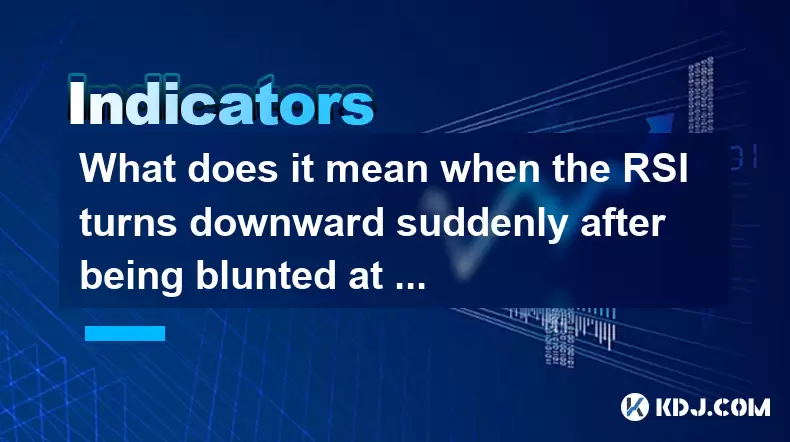
What does it mean when the RSI turns downward suddenly after being blunted at a high level?
Jul 25,2025 at 04:00pm
Understanding the RSI and Its Role in Technical AnalysisThe Relative Strength Index (RSI) is a momentum oscillator that measures the speed and change ...
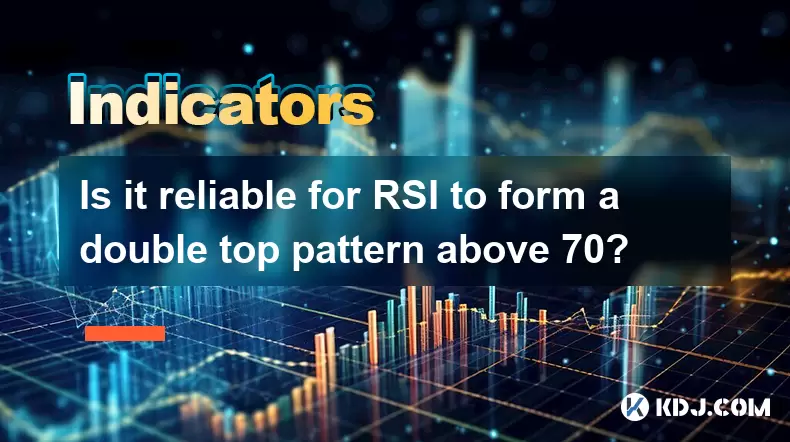
Is it reliable for RSI to form a double top pattern above 70?
Jul 25,2025 at 04:49pm
Understanding the RSI Indicator and Its Role in Technical AnalysisThe Relative Strength Index (RSI) is a momentum oscillator that measures the speed a...
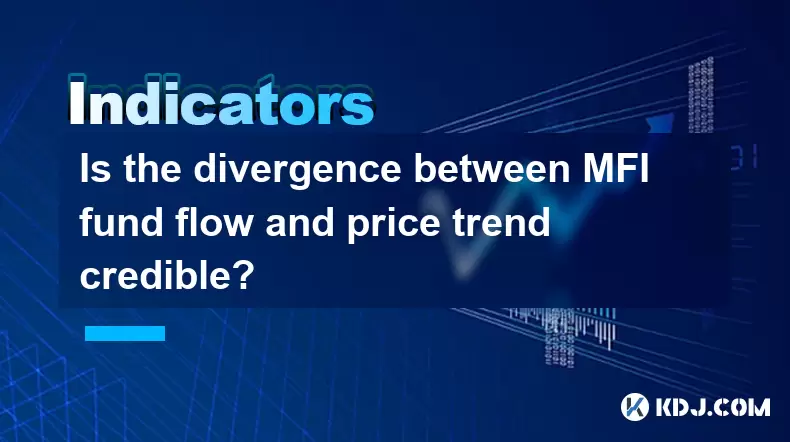
Is the divergence between MFI fund flow and price trend credible?
Jul 25,2025 at 12:01pm
Understanding MFI and Fund Flow in Cryptocurrency MarketsThe Money Flow Index (MFI) is a technical oscillator that combines price and volume to assess...
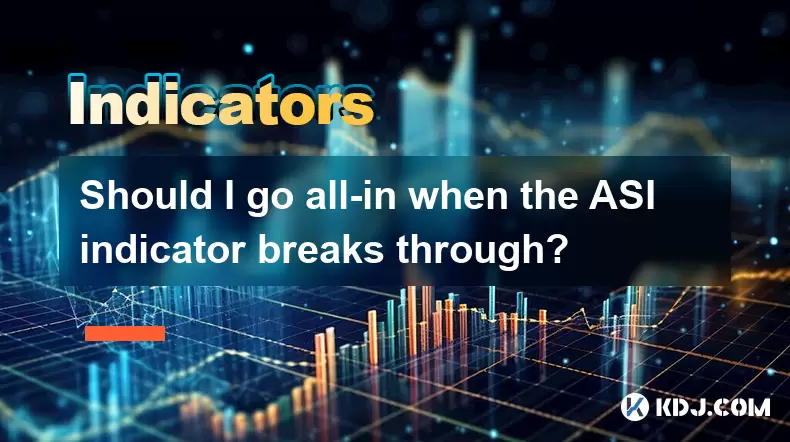
Should I go all-in when the ASI indicator breaks through?
Jul 25,2025 at 01:56pm
Understanding the ASI Indicator and Its SignificanceThe Accumulation Swing Index (ASI) is a technical analysis tool developed by Welles Wilder, the sa...

Should I go all in when DIF crosses DEA?
Jul 25,2025 at 12:42am
Understanding DIF and DEA in MACD AnalysisWhen traders analyze DIF and DEA in the context of the Moving Average Convergence Divergence (MACD) indicato...

What does it mean that the KDJ indicator forms a double bottom at a low level?
Jul 25,2025 at 05:08pm
Understanding the KDJ Indicator in Cryptocurrency TradingThe KDJ indicator is a momentum oscillator widely used in cryptocurrency trading to identify ...

What does it mean when the RSI turns downward suddenly after being blunted at a high level?
Jul 25,2025 at 04:00pm
Understanding the RSI and Its Role in Technical AnalysisThe Relative Strength Index (RSI) is a momentum oscillator that measures the speed and change ...

Is it reliable for RSI to form a double top pattern above 70?
Jul 25,2025 at 04:49pm
Understanding the RSI Indicator and Its Role in Technical AnalysisThe Relative Strength Index (RSI) is a momentum oscillator that measures the speed a...

Is the divergence between MFI fund flow and price trend credible?
Jul 25,2025 at 12:01pm
Understanding MFI and Fund Flow in Cryptocurrency MarketsThe Money Flow Index (MFI) is a technical oscillator that combines price and volume to assess...

Should I go all-in when the ASI indicator breaks through?
Jul 25,2025 at 01:56pm
Understanding the ASI Indicator and Its SignificanceThe Accumulation Swing Index (ASI) is a technical analysis tool developed by Welles Wilder, the sa...

Should I go all in when DIF crosses DEA?
Jul 25,2025 at 12:42am
Understanding DIF and DEA in MACD AnalysisWhen traders analyze DIF and DEA in the context of the Moving Average Convergence Divergence (MACD) indicato...
See all articles

























































































